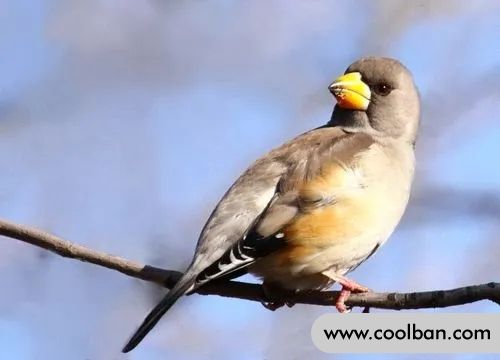How to feed swan-billed finches?
Wax-billed finches are one of the most popular pet birds in China and have high ornamental value. They are medium in size, with adult wax bills about 19 cm long. Both male and female figures are cute and likable.
Morphological characteristics of the wax beak
The size of the wax-billed finch is not too small, and the adult body length is usually about 19cm. Its appearance is not as striking as other birds, but it has always been one of the traditional caged birds in China and is very popular.
This species is almost identical in color between males and females. Adults are black in very small areas at the front of the eyes, base of the mouth and chin; the crown of the head and cheeks are brown, the feathers are gradually deepened from the crown of the head to the back of the head, the occiput is darker brown, and the cheek feathers are contrasting; there is a broad grey streak around the neck The straps, wide at the back and narrow at the front, like a shawl; the feathers on the shoulders and back are dark brown, noticeably darker than the grey rain area on the neck.
The loin feathers are light-skinned yellow; the upper tail coverts are brown; the tail feathers are concave, about the same color as the upper tail coverts, also brown, but the outermost two tail feathers are brown with a bright blue metallic luster, The tail feathers are different, with slightly whitish feathers; the wing coverts are white or yellow, forming a broad longitudinal white spot on the wings, contrasting with the dark brown feathers on the shoulders; the flight feathers are black with bright blue Metallic luster, as if quenched. Treated iron, some primary flight feathers are specialized, with a square tip and a notched inner tip.
The ends of the secondary flight feathers are square, which makes the ends of the wings zigzag when folded, as if they were caught, a feature not found in other birds; the grey area of the neck is later light brown and white host. The chest, upper abdomen and sides are light brown. The underbelly and tail coverts are pure white, and the iris is brown. Has a tin-like texture, which is why the species is named; pink-footed. Adult females are slightly greyer than males. The subadult is a darker version of the adult, with thin brown stripes on the chest and sides, and is wavy in flight.

Breeding environment of the wax beak
No matter what animal it is, they want their home to be clean and tidy, and birds such as wax-billed finches generally live in the mountains or plains in the wild. They live in different environments in different seasons. Providing a chic living home is essential when raising swans at home.
Waxed finches live alone or in pairs, but in the non-breeding season they like to live in groups, sometimes in large groups of dozens or even hundreds, often jumping between branches or flying between trees, sometimes on the ground.
Whether they are raised at home or in the wild, their calls are very loud and beautiful, and those raised at home can be used in thrush cages or starling cages. However, many bird lovers like to keep them on a shelf, and they can be trained to learn skills that other birds cannot.
It should be noted that the cage and water tank should be cleaned once a week to keep the water clean. For trained wax-billed finches, they only eat pockmarks. After training, the grosbeak should be fed water every day. After feeding, put the grouse in a quiet place and not feed the rest of the time.

Feeding knowledge of the wax beak
Waxbills are usually omnivorous birds and will come to you whenever you have the chance to give them food. Of course, they prefer to eat the seeds of oil crops such as hemp, sunflower and saffron. However, frequent feeding of such foods in rearing is not recommended.
The food of the wax-billed finches is mainly on the fruits and seeds of plants, and also eats insects. Edible insects mainly include weevil, pear tiger, golden beetle, walking insect, wasp, hawthorn butterfly and other insects and insect larvae, such as Lepidoptera, Coleoptera, Hymenoptera and Diptera, and can also be fed a small amount at ordinary times. Greens and apples.
There are no special requirements for the cage of the wax beak, as long as it does not affect the jump. If used for training, it can be fastened with a neck chain and placed on a bird stand. A general bird stand is made of about 40-50 cm in length and about 1.5 cm in diameter. The middle part is wrapped with cotton thread, which is convenient for birds to perch. The newly bought wax beak is more impatient; Therefore, be sure to pay attention to the length of the necklace when putting it on the shelves, so as not to be entangled in the neck. If the wax-billed finches are emotionally unstable and fly up and down, they can wet their feathers with water and control their movement; it can also be fed sunflower seeds.
